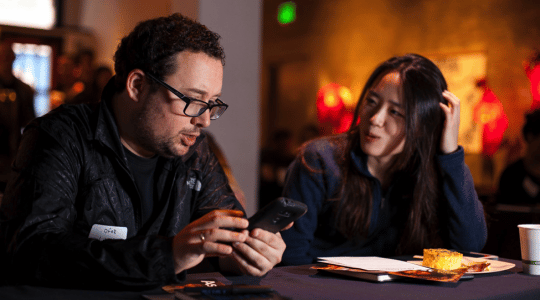Brands are increasingly becoming more interested in ensuring that the money and time they dedicate to their social efforts have measurable value. Although Pinterest remains one of the new kids on the social media block, the social space has progressed enough that brands and agencies are no longer content with just fan/follower growth. Facebook has led the way and set the standard for emerging social networks, which now have a shorter span of time to figure out how brands will exist on their platform. This is especially true for Pinterest, which is known for its ability to attract unique users to social and drive purchase intent. That being said, brands are still just starting to get their feet wet with the platform. As the number of users and brands on Pinterest continues to rapidly increase, it becomes even more important to establish goals and work towards achieving them. At ShareRoot, we have had the chance to talk with a number of brands from various industries, and we have consistently heard that measurable results – not just fan and follower numbers – are the highest priority when it comes to increasing conversions.
The common questions we have heard include;
- How do we measure success on Pinterest?
- How can we compare ourselves to our competitors?
- How many Pinterest users see our pins/repins? How many of those users should we expect to engage with our pins/repins?
- How often should we be pinning and repinning?
We look at the answers to these questions in three ways;
Connectedness
The first and easiest way to measure your brand’s effectiveness on Pinterest, and its ability to drive conversions, is to take a look at your follower base. While follower base is an undeniable and essential element for measuring success, it doesn’t stop there. The connectedness of your brand’s followers is a key piece of the equation. Specifically, it’s important to consider how many followers your brand’s followers have. If your brand’s average second degree followers are roughly 90, when your competitors are 150, your brand will receive 60 less Pinterest newsfeed impressions anytime there is a repin.
Question for continued exploration: Who are we driving to our Pinterest page, and trying to interact with?
Engagement
If your brand has 200,000 followers, but you only receive 10 repins each time you pin, consider where the value is in the money and time spent gathering those followers. Follower engagement heavily impacts your ability to drive conversions. Follower engagement rate is a measurement of the percentage of your followers engaging with any of your pins or repins. if your competitor gets a .1% follower engagement rate, and your brand sees a .3% follower engagement rate, your brand has three times the chance of any follower engaging and potentially converting with each of your pins.
Question for continued exploration: What content are we pinning? Is it interesting? Is it consistent with our brand and follower base?
Activity
Pinterest has a handful of options for engagement that a brand can utilize to generate more conversions. Because engagements are your means to interact with the Pinterest community, a balance of pins, repins, and likes are the primary actions to take (comments are not used very often, and while follows are essential, their frequency can be limited). Pin velocity is a measurement of your average pins per week. Each industry is unique and the best way to identify your ideal pin velocity is to test out different levels while monitoring changes in follower engagement.
Question for continued exploration: How often are we pinning?
Exposure
Similar to Facebook, the most visited place on Pinterest is the newsfeed. The value of impressions and exposure for a brand is an undeniable method for driving engagement and conversions, even if your content isn’t repinned or liked. Estimated reach is a metric, based on followers and follower engagement, that estimates the number of unique Pinterest newsfeed impressions your brand can expect to reach anytime a pin or repin is made. We have seen a massive range in reach; for some brands reach is no more than 10% larger than their follower base, while for others reach is over 2x their follower base.
Question for continued exploration: Are we pinning often enough? Is our content interesting? Is our follower base connected?
Author
Becky is the Senior Content Marketing Manager at TUNE. Before TUNE, she handled content strategy and marketing communications at several tech startups in the Bay Area. Becky received her bachelor's degree in English from Wake Forest University. After a decade in San Francisco and Seattle, she has returned home to Charleston, SC, where you can find her strolling through Hampton Park with her pup and enjoying the simple things in life.




[…] remains one of the new kids on the social media block, the social space has progressed … Read this post » Filed Under: HasOffers […]
[…] We just did a guest blog post over at hasoffers.com running through the basics of measuring success on Pinterest. Check it out here: http://www.hasoffers.com/blog/measure-success-pinterest-drive-conversions/ […]